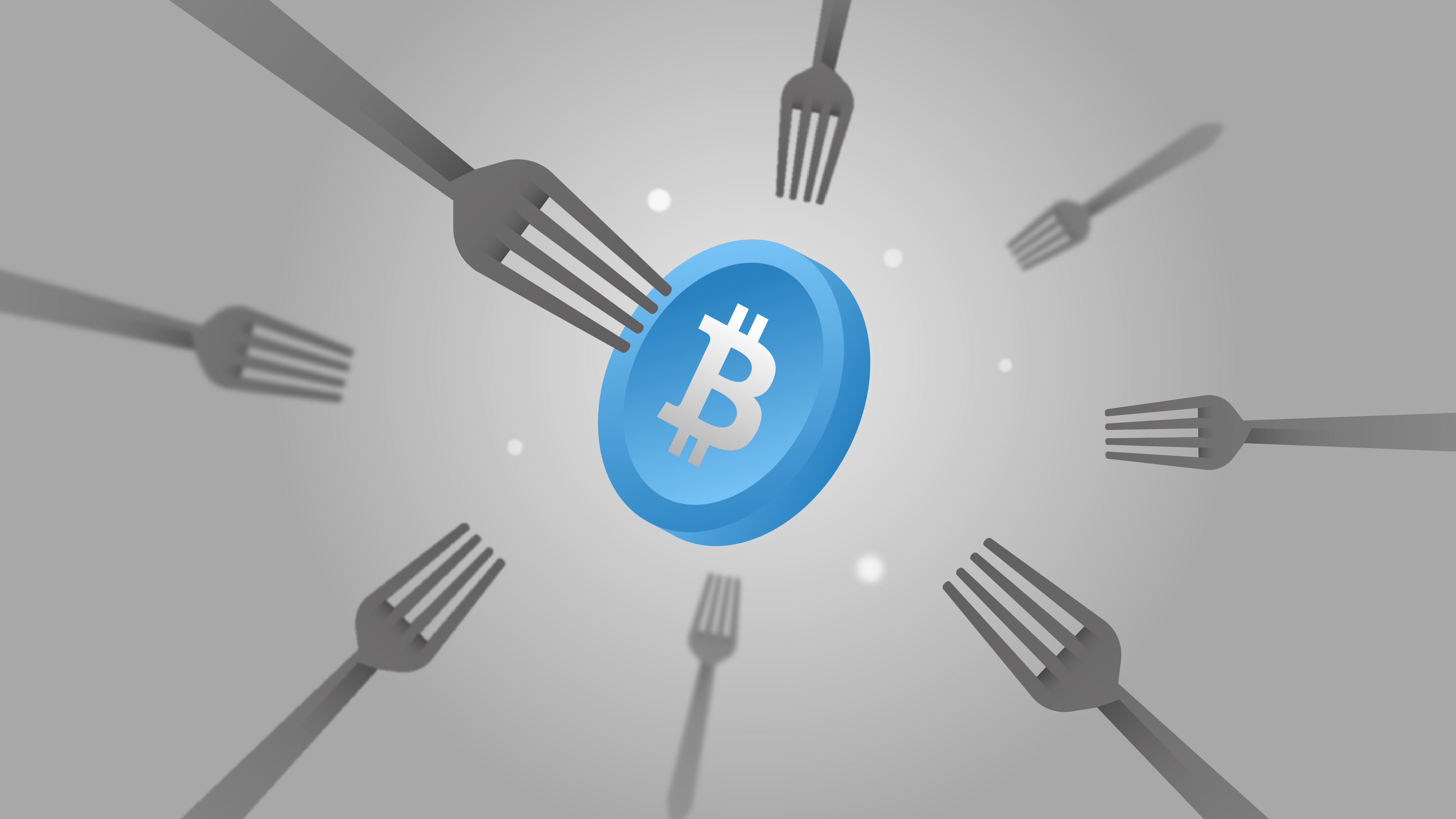Last Updated:
Jul 23, 2025
Fork in cryptocurrency: What is it and why is it needed
Last Updated:
Jul 23, 2025

Author
Share this article
Fork is the process of creating a new blockchain based on an existing one. It allows modifications to the original network's code, implements new features, and provides users with the opportunity to get certain benefits, such as tokens of the new blockchain or participation in new projects. Fork can be either temporary (soft fork) or radical (hard fork), depending on the changes made to the blockchain.
How does it work
In DeFi, fork allows users to participate in new protocols created based on popular blockchains. Users can profit by providing liquidity or engaging in various activities offered by the new project. In most cases, if you own tokens of the old blockchain, you will receive tokens of the new blockchain after the fork.
What are the different types of fork in DeFi
• Hard fork — a radical change to the blockchain structure that creates a new network. For example, Ethereum and Ethereum Classic are two separate projects that emerged as a result of a hard fork.
• Soft fork — a change to the blockchain code that does not require the creation of a new network, but only updates functionality. This is a less intrusive modification and often does not affect users.
• Token fork — the creation of a new token based on an existing blockchain. For example, when a hard fork results in a new token that old token holders receive.
• Governance fork — a fork related to changes in the network governance system. It may involve adjustments in the distribution of votes, decision-making mechanisms, or other factors affecting the blockchain’s future.
How to choose profitable and reliable fork projects
Choosing the right projects to participate in fork is critical for successful earnings. To minimize risks, pay attention to the following factors:
• Audits and security — ensure that the project has undergone a security audit. This is important because vulnerabilities in the code could lead to a loss of funds.
• Reputation and community activity — check reviews on Reddit, Twitter, Discord, and Telegram. An active community and positive reviews are signs of a trustworthy project.
• Project team — look at the team behind the project, their experience in the crypto industry, and their track record of successful launches.
• Liquidity — ensure that the project has sufficient liquidity so that your funds are not locked for extended periods.
What profit can you expect from fork
The profit from participating in a fork depends on several factors, such as the type of fork, liquidity volume, and the new blockchain’s potential. Example: On popular forks, profits can range from 10% to 1000% depending on risks and timelines. However, the higher the return, the greater the risks associated with the project.
What factors affect profitability
• Liquidity — platforms with low liquidity may offer higher returns, but they are also more exposed to risks.
• Time in the pool — the longer you provide liquidity, the more rewards you will earn.
• Market conditions — in volatile markets, returns can fluctuate significantly.
Where to find promising fork projects
To avoid missing out on profitable fork opportunities, keep an eye on new events in the crypto industry.
Where to look for new fork projects?
• Cryptocalendar — tracks popular fork projects and platforms.
• Twitter (X) — project updates and news from teams.
• Discord and Telegram — discussions and announcements about new projects in communities.
Tip: Stay on top of new protocols emerging in the market, and always check the reputation of the platform before committing funds.
Conclusion
Fork is a great opportunity to earn passive income, but it comes with risks. It is important to carefully choose projects and always consider security, liquidity, and real prospects.
Author
Share this article
